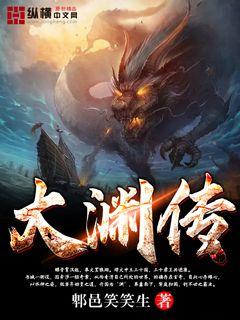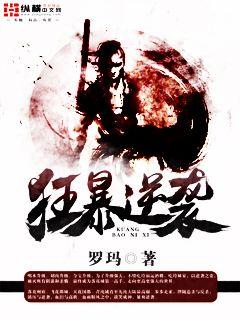爱看球jrs直播网页入口在哪|nba直播 jrs直播
- 来源:jrs直播网
- 2024-11-22 11:58:27

文章摘要:西甲传奇:重返荣耀与挑战,描绘了西班牙足球顶级联赛的历史与现状。从其传奇球星、激烈竞争的赛事、俱乐部的兴衰变迁,到面临的挑战与未来发展,每个方面都展示了西甲在全球足球舞台上的独特魅力。
1、传奇球星
西甲历史上涌现了无数传奇球星,如迭戈·马拉多纳、路易斯·恩里克、罗纳尔迪尼奥等,他们不仅在球场上创造了传奇,也成为了球迷心中永恒的记忆。
西甲的传奇球星不仅仅是技术的代表,更是文化的象征,他们的影响力远超足球本身,深刻影响了西班牙足球的发展与世界足坛的格局。
这些球星的传奇经历,不仅仅是球迷的话题,更是西甲联赛历史发展的见证与象征。
2、激烈竞争的赛事
西甲联赛因其激烈的竞争而闻名于世。每个赛季的冠军争夺战都备受关注,巴萨、皇马等传统豪门与马竞等新兴劲旅的对决成为全球足球迷的焦点。
激烈的竞争不仅体现在顶级球队之间的对抗,也反映在保级区域的争夺上,每个俱乐部都为了在西甲站稳脚跟而拼尽全力。
这种竞争,不仅激发了球员们的激情,也推动了整个联赛的发展与提升。
3、俱乐部的兴衰变迁
西甲俱乐部经历了兴衰变迁的历程。从大豪门的辉煌时代到中小俱乐部的崛起,每支球队都有其独特的成长与沉浮故事。
一些曾经的冠军球队,如瓦伦西亚、塞维利亚,在历史长河中留下了浓墨重彩的一笔,而新晋劲旅也在不断崛起,为西甲联赛增添了新的活力与魅力。
俱乐部的兴衰变迁,不仅仅是足球运动的发展,更是西班牙足球文化多样性的体现。
4、面临的挑战与未来发展
西甲面临诸多挑战,包括财政困境、竞争力下降以及全球市场的竞争压力。如何在保持竞争力的同时,实现可持续发展,成为了西班牙足球界的重要议题。
未来,西甲需要在技术、市场、管理等多个方面进行创新与发展,以确保其在全球足球舞台上的领先地位。
面对这些挑战,西甲联赛的发展方向与策略将决定其未来的命运与影响力。
总结:
西甲传奇:重返荣耀与挑战,不仅仅是对西班牙足球历史的回顾与总结,更是对其现状与未来发展的深入探讨。通过传奇球星、激烈竞争的赛事、俱乐部的兴衰变迁以及面临的挑战与未来发展等方面的详细阐述,展示了西甲联赛作为世界顶级足球联赛的独特魅力与发展轨迹。
西甲在不断变化的足球风云中,持续引领着全球足球发展的潮流,其未来的发展路径将影响着全球足球运动的格局与走向。
Certainly! Here's the structured article on "Exploring Ajax: Team Composition and Future Prospects":
**Abstract:**
Ajax Amsterdam, a powerhouse in Dutch football, embodies a blend of youthful exuberance and tactical sophistication. This article delves into their current team dynamics, tactical prowess, youth development strategies, and future prospects, highlighting how Ajax navigates both domestic challenges and international ambitions.
---
1、Current Team Composition
Ajax's current squad composition is a testament to their commitment to youth development and tactical innovation. The team is structured around a core of young talents nurtured through the famed Ajax academy, supplemented by strategic acquisitions that enhance their competitive edge.
The midfield, anchored by experienced playmakers and bolstered by dynamic young talents, forms the heartbeat of the team's possession-oriented style under Erik ten Hag's leadership.
Defensively, Ajax showcases a blend of solidity and fluidity, with full-backs who contribute both defensively and offensively, fitting seamlessly into the team's high-pressing system.
2、Tactical Prowess and Strategy
Ajax's tactical approach under Erik ten Hag emphasizes fluid positional play and rapid transitions. The team's ability to switch effortlessly between various formations, including a flexible 4-3-3 and 4-2-3-1, underscores their adaptability and tactical acumen.
High pressing and quick ball circulation are pivotal aspects of Ajax's gameplay, aimed at disrupting opponents' rhythm and exploiting spaces. This proactive style not only dominates domestically but also poses a significant threat in European competitions.
Set-piece proficiency and intelligent off-the-ball movement further highlight Ajax's strategic depth, making them a formidable opponent on multiple fronts.
3、Youth Development Strategy
Ajax's renowned youth academy remains a cornerstone of their success, continually producing world-class talents. The club's commitment to nurturing young players through a holistic development approach ensures a steady influx of talent into the first team.
The integration of academy graduates into the senior squad fosters a cohesive team spirit and a shared understanding of Ajax's footballing philosophy. This continuity not only sustains the club's success but also enhances its reputation as a talent hub.
Strategic loan moves and youth tournaments provide invaluable experience for young players, preparing them for the demands of top-tier football and ensuring a pipeline of future stars.
4、Future Prospects and International Ambitions
Looking ahead, Ajax's future appears bright with a blend of promising youth and seasoned professionals. The club's sustainable financial model and strategic transfer policy position them well for sustained success both domestically and in European competitions.
Continued emphasis on youth development and tactical innovation underpins Ajax's aspirations to reclaim their stature as a dominant force in European football. Their ability to retain key talents while attracting top prospects ensures a competitive edge in the long term.
With a firm commitment to their rich footballing heritage and a progressive outlook, Ajax Amsterdam stands poised to make significant strides on the global stage, reaffirming their status as a club of enduring excellence.
总结:
In conclusion, Ajax Amsterdam exemplifies a harmonious blend of youth development, tactical ingenuity, and strategic foresight. Their current team composition leverages homegrown talents and strategic acquisitions to sustain competitiveness across all fronts. Looking forward, Ajax's commitment to nurturing young talents and embracing tactical evolution ensures a promising trajectory, both domestically and internationally.
This structured approach provides a comprehensive overview of Ajax Amsterdam's current strengths, strategies, and future prospects in the realm of European football.
Certainly! Here's the structured article on "The Rise and Challenges of Cuban Basketball Players":
**Abstract:**
Cuban basketball has seen both triumphs and tribulations in recent decades. This article explores the journey of Cuban basketball players, highlighting their rise to prominence, the challenges they face within and beyond the sport, and the enduring impact on the national and international stages.
**1、Emergence of Talent**
Cuban basketball has witnessed a surge in talent over the years, marked by grassroots initiatives and national programs aimed at nurturing young athletes. The development of local leagues and academies has provided a fertile ground for budding players to hone their skills and showcase their potential on a larger stage.
Historically, Cuba has produced athletes renowned for their agility and strategic prowess on the court. This foundation has been crucial in shaping the current generation of players, who often emerge from humble beginnings but possess raw talent and a fierce determination to succeed.
In recent years, Cuban basketball federations have intensified efforts to identify and support promising prospects from a young age. Talented individuals are scouted and enrolled in specialized training programs, where they receive coaching and mentorship to refine their technical abilities and tactical understanding of the game.
As a result, Cuban basketball has seen a steady influx of skilled players who are not only competitive domestically but also capable of making significant contributions to international tournaments.
**2、Challenges on the Domestic Front**
Despite the talent pool, Cuban basketball faces formidable challenges within its domestic structure. Issues such as limited funding, outdated infrastructure, and administrative inefficiencies often hinder the sport's growth and competitiveness at the national level.
The Cuban Basketball Federation struggles with financial constraints that affect player development initiatives and infrastructure maintenance. Many training facilities are in need of modernization, and access to quality coaching and resources varies significantly across regions.
Furthermore, the sport faces competition from other popular activities within Cuban culture, diverting potential talent away from basketball. Baseball, for example, remains deeply ingrained in the national psyche and often attracts promising athletes who might otherwise pursue basketball.
These challenges underscore the need for sustained investment in grassroots programs and structural reforms aimed at revitalizing Cuban basketball from the grassroots up.
**3、International Competition and Opportunities**
On the international stage, Cuban basketball players have showcased their skills and resilience, despite facing adversities. Competing against well-funded and highly organized teams from other countries has provided Cuban athletes with invaluable experience and exposure to different styles of play.
Cuban players have historically excelled in regional tournaments such as the Central American and Caribbean Games, where they often dominate competition and secure medals for their country. These achievements not only bolster national pride but also serve as a testament to the talent and dedication of Cuban basketball players.
However, challenges such as limited access to international leagues and restrictive travel policies have restricted opportunities for Cuban athletes to compete at the highest levels abroad. Many promising players find themselves constrained by political and economic factors that limit their ability to pursue professional careers overseas.
Despite these challenges, Cuban basketball continues to produce athletes capable of competing on a global scale, demonstrating resilience and adaptability in the face of adversity.
**4、Future Prospects and Strategic Imperatives**
Looking ahead, the future of Cuban basketball hinges on strategic imperatives aimed at overcoming current challenges and capitalizing on emerging opportunities. Key initiatives include enhancing youth development programs, modernizing infrastructure, and fostering partnerships with international organizations to expand exposure and access for Cuban players.
Investments in coaching education and sports science will be crucial in nurturing the next generation of Cuban basketball stars, equipping them with the skills and knowledge needed to excel in an increasingly competitive global arena.
Furthermore, fostering a supportive ecosystem that encourages collaboration between public and private sectors can help mitigate financial constraints and promote sustainable growth within Cuban basketball.
By addressing these strategic imperatives, Cuban basketball can position itself for continued success and make significant strides towards reclaiming its position among the elite basketball nations of the world.
**Conclusion:**
In conclusion, Cuban basketball has navigated a complex landscape defined by both triumphs and challenges. From the emergence of talented players within a nurturing environment to the obstacles posed by domestic limitations and international competition, Cuban basketball continues to evolve and adapt. Moving forward, strategic investments and reforms will be pivotal in shaping the future trajectory of the sport, ensuring that Cuban athletes can compete and excel on the global stage.
Ultimately, the resilience and passion of Cuban basketball players serve as a testament to their enduring spirit and commitment to the sport, promising a future where Cuban basketball can once again shine brightly.
文章摘要:马拉多纳冲突:足坛骚乱的风云,是一场足球史上的重要事件,掀起了轩然大波。本文将从马拉多纳的光芒与阴影、冲突的爆发与发展、影响力的延续与深远、以及事件的反思与启示等四个角度对这场风云进行深入阐述。
1、马拉多纳的光芒与阴影
追溯马拉多纳作为足球巨星的光辉时刻,他的天赋、技术和领导力让无数人为之倾倒。
然而,马拉多纳的生活中也是阴影重重,吸毒、暴力、犯罪等事件屡见不鲜,给他的形象抹上污点。
这两面性构成了马拉多纳深深的魅力和批评声浪。
2、冲突的爆发与发展
马拉多纳与足球界各方矛盾渐起,最终在某个时间节点达到了爆发。
事件的发展过程曲折跌宕,从表面上看是因为某个具体事件引发,背后却有更深层次的矛盾和蓄积。
冲突不断升级,造成了一系列连锁反应,波及广泛。
3、影响力的延续与深远
马拉多纳冲突的余波持续影响着足球界,无论是在赛场上还是在球迷心中。
事件的影响延伸至社会各个层面,引发了关于体育、道德、名誉等诸多议题的讨论。
马拉多纳的形象也因此更加复杂和多面化,让人们不断思考他所代表的是什么。
4、事件的反思与启示
马拉多纳冲突带来的不仅是混乱和分裂,更多的是对整个足球界的反思和警示。
我们需要从事件中吸取教训,重新审视足球文化的道德与规范,努力构建更加健康、平等、和谐的足球环境。
只有如此,才能避免类似事件再次发生,为足球界的发展开辟更加美好的未来。
总结:
马拉多纳冲突:足坛骚乱的风云,是一场让人震撼、深思的足球史事件。从马拉多纳的光芒与阴影,冲突的爆发与发展,影响力的延续与深远,到事件的反思与启示,我们看到了足球世界的复杂与多元,也看到了我们需要共同努力建设更美好足球环境的紧迫性和必要性。
文章摘要:足球发球技术在比赛中扮演着至关重要的角色,其多样性和战术应用不仅影响比赛节奏和结果,还反映了球队整体实力和个体技术水平。本文从直接任意球、间接任意球、角球和球门球四个方面深入探讨了不同发球技术的特点、战术应用及其对比,通过对比分析,揭示了各技术的优劣势和实战应用的差异,旨在全面展示足球发球技术的战术意义与技术要求。
1、直接任意球
直接任意球是足球比赛中一种直接射门机会的来源,通常由射门能手担任。这种技术不仅要求射门精准和力量掌控,还需要考虑角度和障碍物。在战术上,直接任意球可以直接打入球门,是攻击时的有力武器。然而,由于射门距离较远,命中率相对较低,需要特别训练和球员天赋。
与其他发球技术相比,直接任意球更加依赖个体技术和射门精度,适合于需要迅速反击或者在比分落后时追平比分的场景。
在实战中,球员通常通过技术细节的精湛表现和战术上的创新,来增加直接任意球的成功率。
2、间接任意球
与直接任意球不同,间接任意球通常用于传球或者制造混乱,而非直接射门。这种技术更注重团队配合和战术部署,通过快速传递球来打破对手的防线。间接任意球常用于在禁区外围或者中场位置,以配合球队高效建立进攻。
战术上,间接任意球通常是制造空档和创造进攻机会的关键步骤。球队会在训练中精确磨合,以确保球员能够迅速准确地传递球,并制造对手的混乱。
与其他发球技术相比,间接任意球更侧重于集体默契和战术意识,适合于需要通过团队合作打开对手防线的比赛场景。
3、角球
角球是一种进攻机会,通常发生在对方禁区附近的角落处。这种技术不仅要求发球员精准的传中能力,还需要进攻球员的空中争顶能力。在战术上,角球是攻击球队快速破门的重要途径之一,球队会在角球战术中设计多种进攻套路和战术变化。
角球的特点是攻守转换迅速,进攻方可以通过精准的传中和球员的空中优势来制造得分机会。然而,防守方也能通过有效的防守组织和空中争顶来化解威胁。
与其他发球技术相比,角球更依赖于空中对抗和传中技术的精准度,适合于球队拥有出色空中优势或者需要打破对手防线的比赛场景。
4、球门球
球门球是从球门区域内发动的一种发球技术,通常用于重新开始比赛或者解围。这种技术要求门将精准的长传和队员的接球能力,以迅速发起反击或者稳固防守。在战术上,球门球是球队控制比赛节奏和战术部署的关键环节,有效的球门球可以迅速转换比赛局势。
球门球的特点是起始位置固定,发球员可以通过长传找到空档队友或者远射直接威胁对手球门。然而,由于球场面积有限和对手高压逼抢,球门球也存在失误风险。
与其他发球技术相比,球门球更依赖门将的长传技术和球队的反应速度,适合于球队需要在紧张比赛中迅速反击或者在防守时稳固局势的比赛场景。
总结:
足球发球技术的多样性反映了现代足球战术的丰富性和复杂性。直接任意球、间接任意球、角球和球门球各有其特点和应用场景,在实战中球队需要根据比赛局势和对手特点选择最合适的发球策略。这些技术不仅仅是进攻或者防守的手段,更是体现球队战术意识和个体技术水平的重要窗口。
在今后的足球比赛中,随着战术的进化和技术的提升,足球发球技术将继续发挥重要作用,成为决定比赛走向的关键因素之一。
文章摘要的内容:本文深入探讨了球员踝骨骨折的原因、治疗及康复过程。首先分析了造成踝骨骨折的多种因素,包括运动伤害和事故等;接着详细介绍了治疗的不同方法,如手术和保守治疗;然后探讨了康复阶段的关键步骤和挑战,强调了个性化康复计划的重要性。最后,总结了预防措施和对未来研究的展望。
1、骨折原因
踝骨骨折的主要原因可以归结为运动损伤和意外事故两大类。运动损伤通常发生在高强度运动或不当训练时,例如篮球、足球等运动中的扭伤和摔倒。而意外事故则可能由于交通事故、高空坠落等外力导致踝骨遭受严重损伤。
除此之外,踝部解剖结构的特殊性也使其成为易受伤害的部位,特别是侧踝部位的解剖构造对外力的抵抗性较弱,容易发生骨折。
在运动损伤中,如何正确评估风险并采取预防措施显得尤为重要,可以有效降低踝骨骨折的发生率。
2、治疗方法
治疗踝骨骨折的方法因骨折类型、骨折部位以及患者的整体健康状况而异。一般来说,治疗可以分为保守治疗和手术治疗两种主要方式。
保守治疗适用于不显露骨折断端、骨折稳定的情况,通常采用石膏固定或功能性支具固定来促进愈合。而对于复杂的骨折、骨折不稳定或者骨折伴有关节不稳定性的情况,则可能需要进行手术治疗,例如内固定手术或者关节镜手术。
手术治疗在恢复骨折稳定性和恢复关节功能方面通常有更好的效果,但也伴随着手术风险和术后康复期的挑战。
3、康复阶段
康复是治疗踝骨骨折过程中不可或缺的阶段,它直接影响到患者的功能恢复和生活质量。康复阶段的关键包括早期康复、中期康复和晚期康复。
早期康复主要集中在疼痛管理、水肿控制和关节功能的保护性运动。中期康复则逐步引入功能性训练和逐步负荷,以增强受伤部位的稳定性和力量。晚期康复阶段则注重运动功能的恢复和生活习惯的逐步恢复。
个性化康复计划根据患者的具体情况和治疗过程中的变化进行调整,以确保康复的有效性和安全性。
4、预防与展望
预防踝骨骨折的关键在于减少运动和生活中的意外伤害,采取适当的安全措施和使用个性化的防护装备。此外,定期进行运动筛查和评估,以及维持良好的身体健康状态也是预防的重要措施。
未来,随着医疗技术的进步和对骨折愈合机制的深入理解,预计会出现更加精准和个性化的治疗方案,以及更有效的康复策略,从而进一步提高患者的康复效果。
总结:
球员踝骨骨折是一种常见但严重的运动损伤,其发生与运动损伤和意外事故密切相关。治疗方法包括保守治疗和手术治疗,康复过程关键在于个性化的康复计划和阶段性的功能恢复。预防措施和未来研究的发展将进一步提升对踝骨骨折的管理水平和治疗效果。
踝骨骨折的预防和治疗是一个综合性的医疗问题,需要从多个方面进行综合分析和处理。
上一篇: jrs直播免费观看咪咕
下一篇: 中国对日本世预赛时间海报










